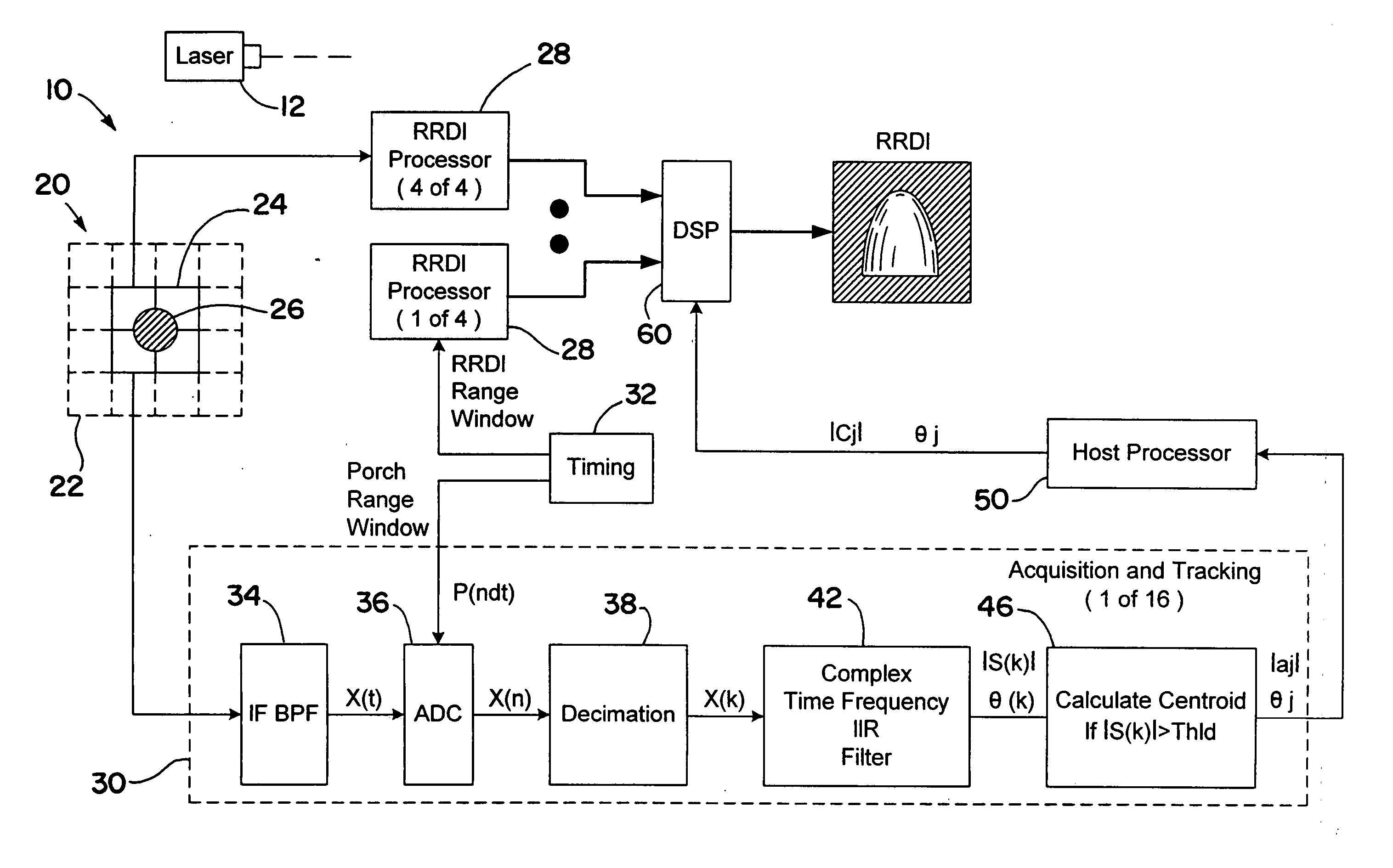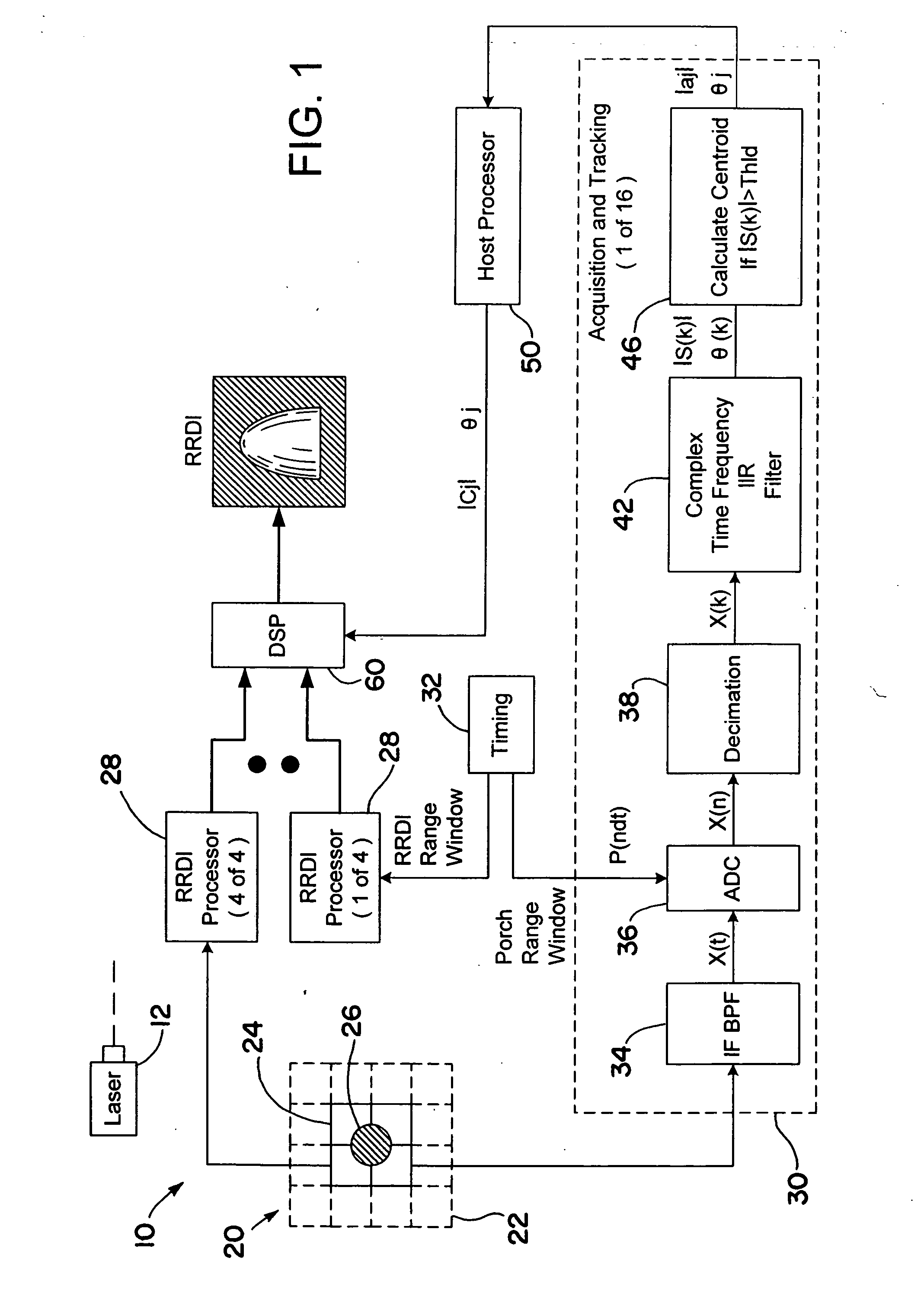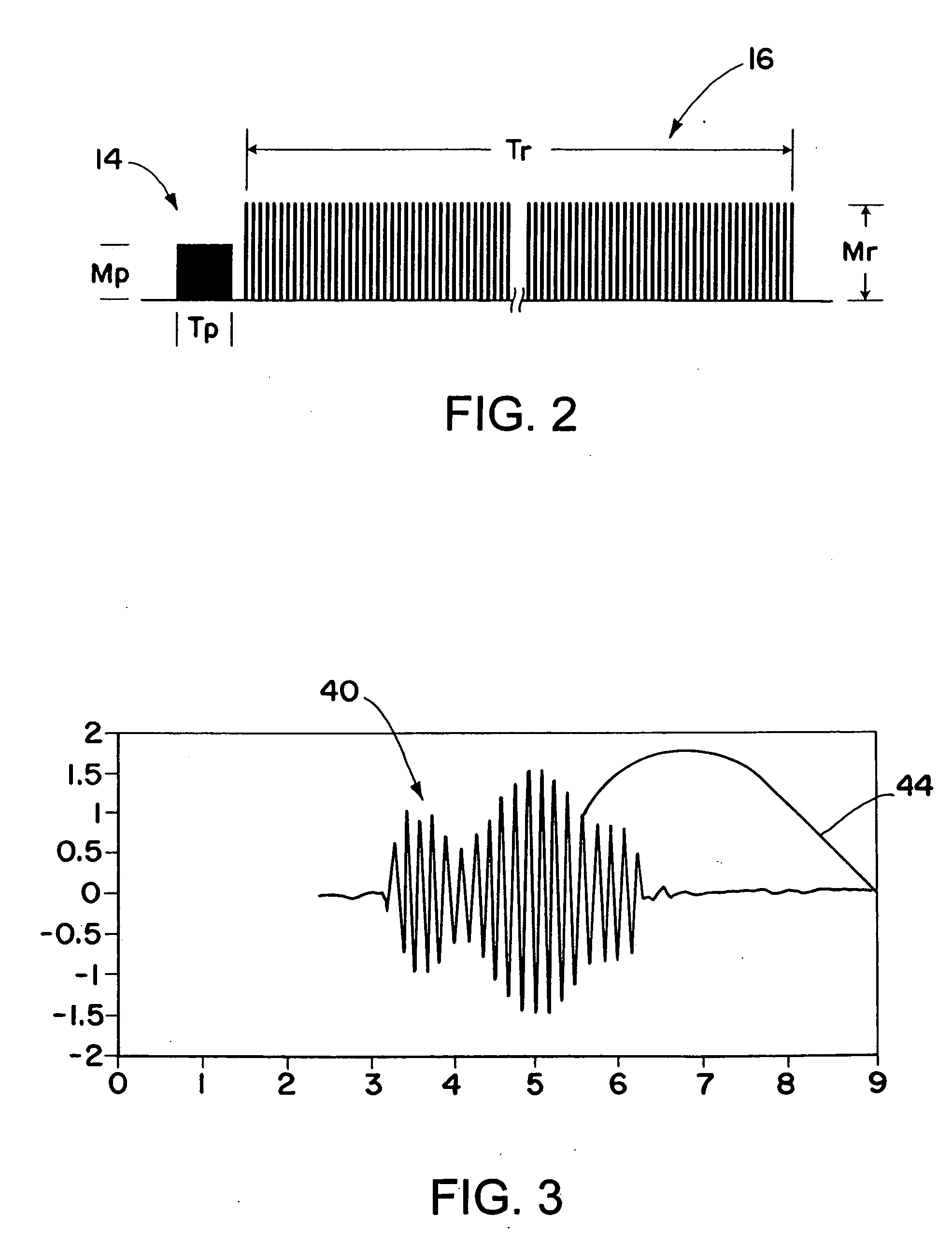Amplitude-weighted spatial coherent processing for ladar system
- Summary
- Abstract
- Description
- Claims
- Application Information
AI Technical Summary
Benefits of technology
Problems solved by technology
Method used
Image
Examples
Embodiment Construction
[0022] The present invention will now be described with reference to the drawings, wherein like reference numerals are used to refer to like elements throughout.
[0023] One aspect of the invention includes amplitude-weighted spatial coherent processing. As is described below in more detail, amplitude-weighted spatial coherent processing is used within an imaging laser radar (LADAR) system to improve the carrier-to-noise ratio (CNR). The use of amplitude-weighted spatial coherent processing avoids or at least minimizes summing noise from array detectors that are not detecting a target returned signal. The methodology described herein maximizes and maintains nearly constant the composite heterodyne efficiency (HE) of the heterodyne detector array and, therefore, the CNR of the resultant amplitude-weighted coherent signal used to form the RRDI image.
[0024] Referring initially to FIG. 1, an RRDI LADAR system 10 is shown in accordance with an exemplary embodiment of the present inventio...
PUM
 Login to View More
Login to View More Abstract
Description
Claims
Application Information
 Login to View More
Login to View More - R&D
- Intellectual Property
- Life Sciences
- Materials
- Tech Scout
- Unparalleled Data Quality
- Higher Quality Content
- 60% Fewer Hallucinations
Browse by: Latest US Patents, China's latest patents, Technical Efficacy Thesaurus, Application Domain, Technology Topic, Popular Technical Reports.
© 2025 PatSnap. All rights reserved.Legal|Privacy policy|Modern Slavery Act Transparency Statement|Sitemap|About US| Contact US: help@patsnap.com



